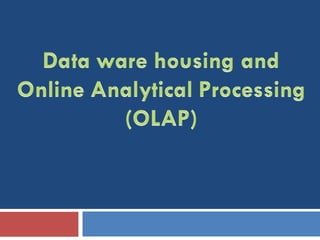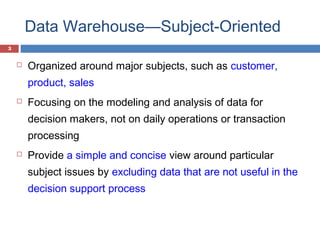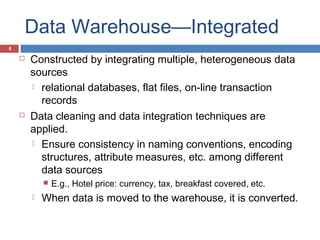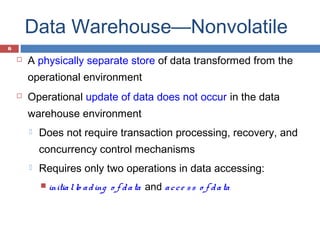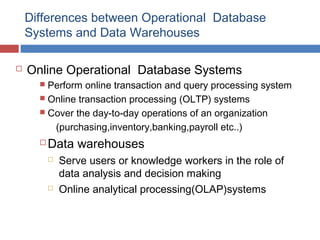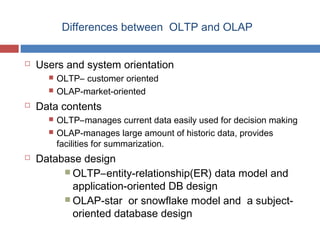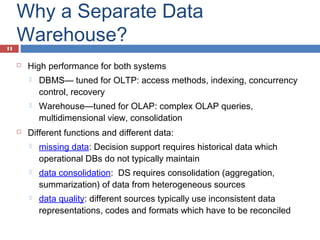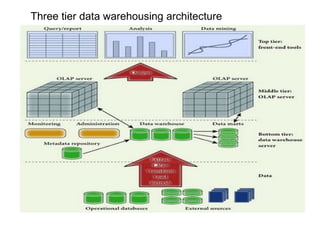A data warehouse is a subject-oriented, integrated, time-variant collection of data that supports management's decision-making processes. It contains data extracted from various operational databases and data sources. The data is cleaned, transformed, integrated and loaded into the data warehouse for analysis. A data warehouse uses a multidimensional model with facts and dimensions to allow for complex analytical and ad-hoc queries from multiple perspectives. It is separately administered from operational databases to avoid impacting transaction processing systems and allow optimized access for decision support.
